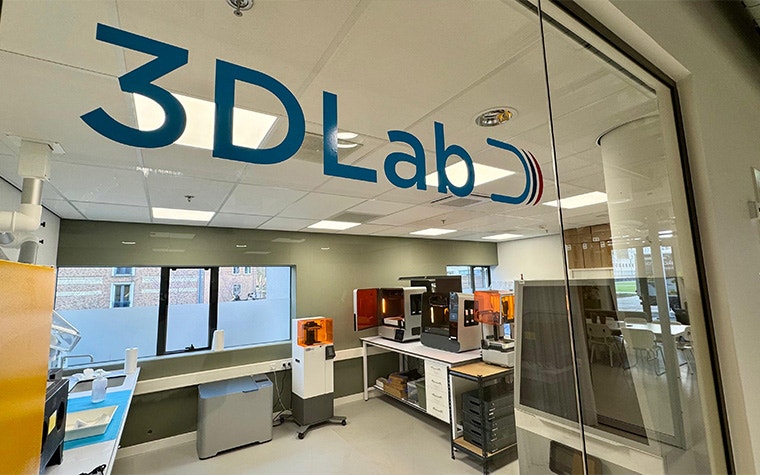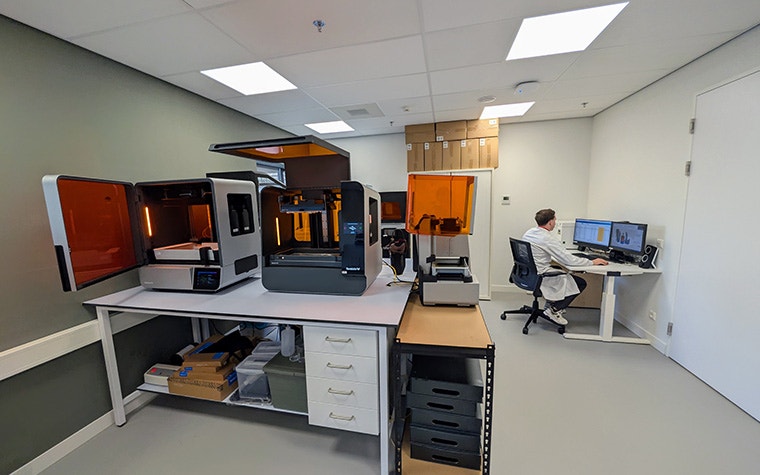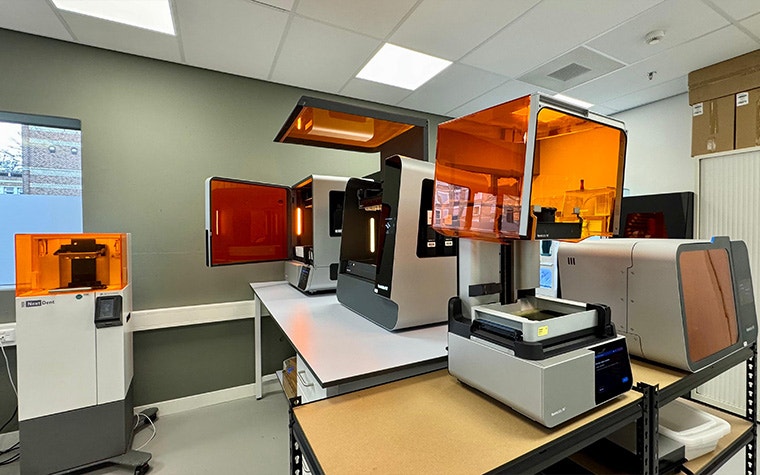
INTERVIEW
Case Management Systems: A Turning Point in Internal Communication and Collaboration for Radboud UMC’s 3D Lab
Scaling up to 1,000 cases annually without sacrificing precision is no small feat — success hinges on communication and efficient systems. Experts at Radboud University Medical Center in Nijmegen, Netherlands have witnessed this firsthand. Bas Kramer, a technical engineer specializing in 3D printing and cranial implants, and Arico Verhulst, a 3D specialist overseeing surgical cases, have seen how implementing a robust case management system can transform internal communication and operational efficiency.
Can you tell us about your team and workflow? How many cases do you handle annually?
Arico: Our team has grown significantly since its inception in 2006, from a small group to about 22 members. We now manage approximately 1,000 cases annually, including orthognathic surgeries, cranial surgeries, trauma cases, anatomical modeling, and more. The rise in trauma cases has introduced unique challenges that require advanced 3D planning techniques.
What tools or applications are the most valuable in your lab, and why?
Arico: Materialise Mimics software has drastically improved efficiency. Specific advanced tools, like split model and local thresholding, allow us to separate the mandible from the maxilla in seconds, saving significant time compared to manual processes.
Bas: Our software engineer developed a custom script for drilling guides that reduced the process from 10 – 15 minutes to just one minute. This allows us to focus more on clinical aspects rather than repetitive tasks.


How do you collaborate with clinicians, and how does a case management system help?
Bas: In the past, collaboration relied heavily on email threads and Excel spreadsheets, which led to inefficiencies and errors. With the case management system, patient-specific data is centralized, making workflows much smoother.
Arico: Clinicians can upload information directly into the platform, and we can track the progress of each case without constant back-and-forth communication. It’s simplified everything.
“For 3D printing workflows, it reduces stress and creates headspace. The platform provides structure, minimizes administrative burdens, and improves traceability, which is crucial for meeting regulatory standards.”
— Bas Kramer
What are the benefits of using a case management system in your lab?
Arico: One of the biggest benefits is having a clear overview of tasks — what needs to be done and what has already been completed. Centralizing STL files and case information ensures the correct file version is always used, reducing mistakes and saving time.
Bas: For 3D printing workflows, it reduces stress and creates headspace. The platform provides structure, minimizes administrative burdens, and improves traceability, which is crucial for meeting regulatory standards.
How does a case management system contribute to regulatory compliance?
Arico: The system saves every step of the process, including changes made and agreements from surgeons. For example, when printing a guide, the system tracks the batch and material used, supporting compliance with MDR regulations.
Bas: Before using the system, agreements were often verbal or documented in emails, which could lead to inconsistencies. Now, everything is centralized and properly recorded, reducing the risk of errors and ensuring compliance.


How has a case management system impacted internal communication and collaboration?
Arico: The system has simplified communication by reducing unnecessary back-and-forth. Transitions during holidays or absences have become much smoother. Open cases are clearly marked within the system, allowing colleagues to pick up tasks seamlessly.
Bas: It minimizes mistakes because the requester inputs all patient information directly into the platform. This eliminates the need for manual data transfers, reducing the number of steps and potential errors in administrative work.
How does the integration of Mimics and 3-matic with Mimics Flow Case Management affect you?
Conclusion
A dedicated case management system has proven to be a powerful tool for improving internal communication, collaboration, and compliance in healthcare settings. For experts like Bas Kramer and Arico Verhulst, it has streamlined workflows, reduced administrative burdens, and fostered a more organized and efficient work environment. By centralizing processes and enhancing transparency, case management systems empower healthcare teams to focus on what truly matters — providing exceptional patient care.
L-104566-01
Share on:

Biography
Arico Verhulst

Biography
Bas Kramer
You might also like
Never miss a story like this. Get curated content delivered straight to your inbox.
